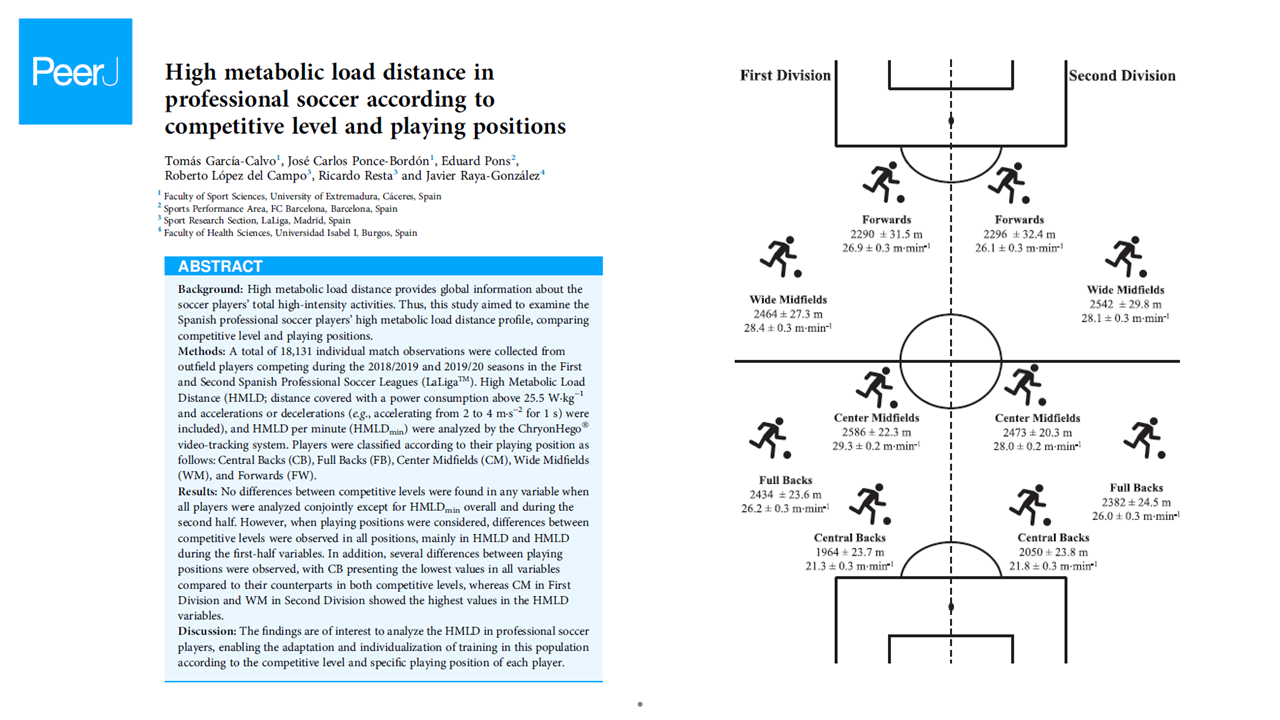
20 Sep High metabolic load distance in professional soccer according to competitive level and playing positions
Posted at 13:28h
in Paper
This study analyzed 18,131 match observations from LaLiga First and Second Division (2018/19–2019/20) using Mediacoach® tracking to explore how high metabolic load distance (HMLD)—a measure that combines high-speed running with accelerations and decelerations—varies by playing position and competitive level.
Key insights for coaches and performance staff:
- Not just speed: HMLD goes beyond sprinting; it integrates energy-demanding accelerations and decelerations, giving a more realistic picture of match intensity.
- Positional demands differ sharply: Central Backs showed the lowest HMLD values, while Central Midfields (First Division) and Wide Midfields (Second Division) recorded the highest. This reflects role-specific intensity profiles.
- Competitive level effect: Overall, First and Second Division players showed similar values. But when analyzed by position, significant differences emerged, especially in the first half, highlighting tactical and style variations between divisions.
- Training impact: Conditioning work should not be based only on absolute running distances. HMLD allows tailoring load to positional roles and league demands, ensuring players train for the real match intensity they face.
Practical applications:
- Use HMLD profiles to design position-specific conditioning drills.
- Consider league style differences when planning training loads or scouting profiles.
- For analysts, HMLD offers a more holistic indicator of high-intensity match demands compared to sprint metrics alone.
Read the full paper here (DOI): https://doi.org/10.7717/peerj.13318


